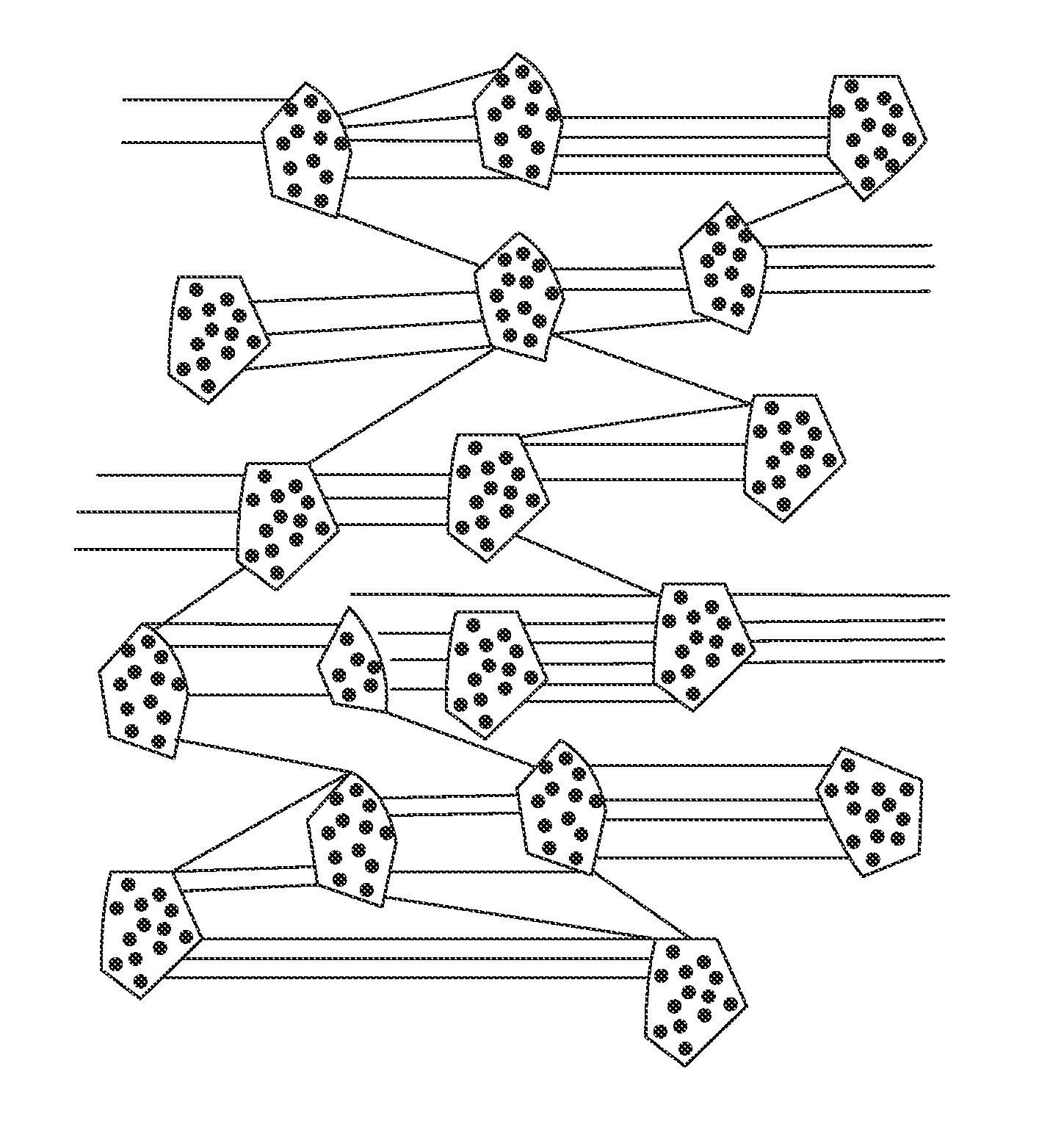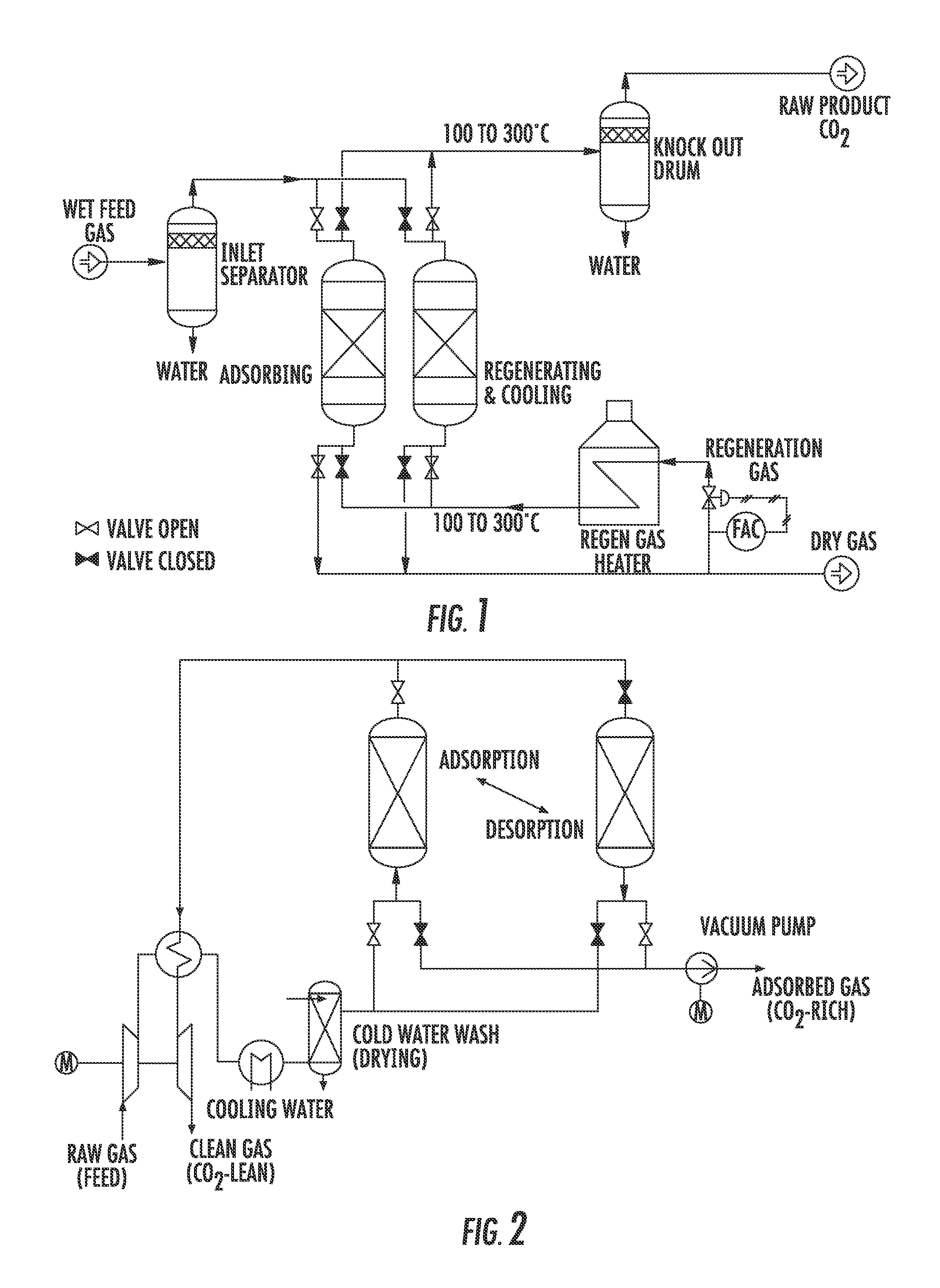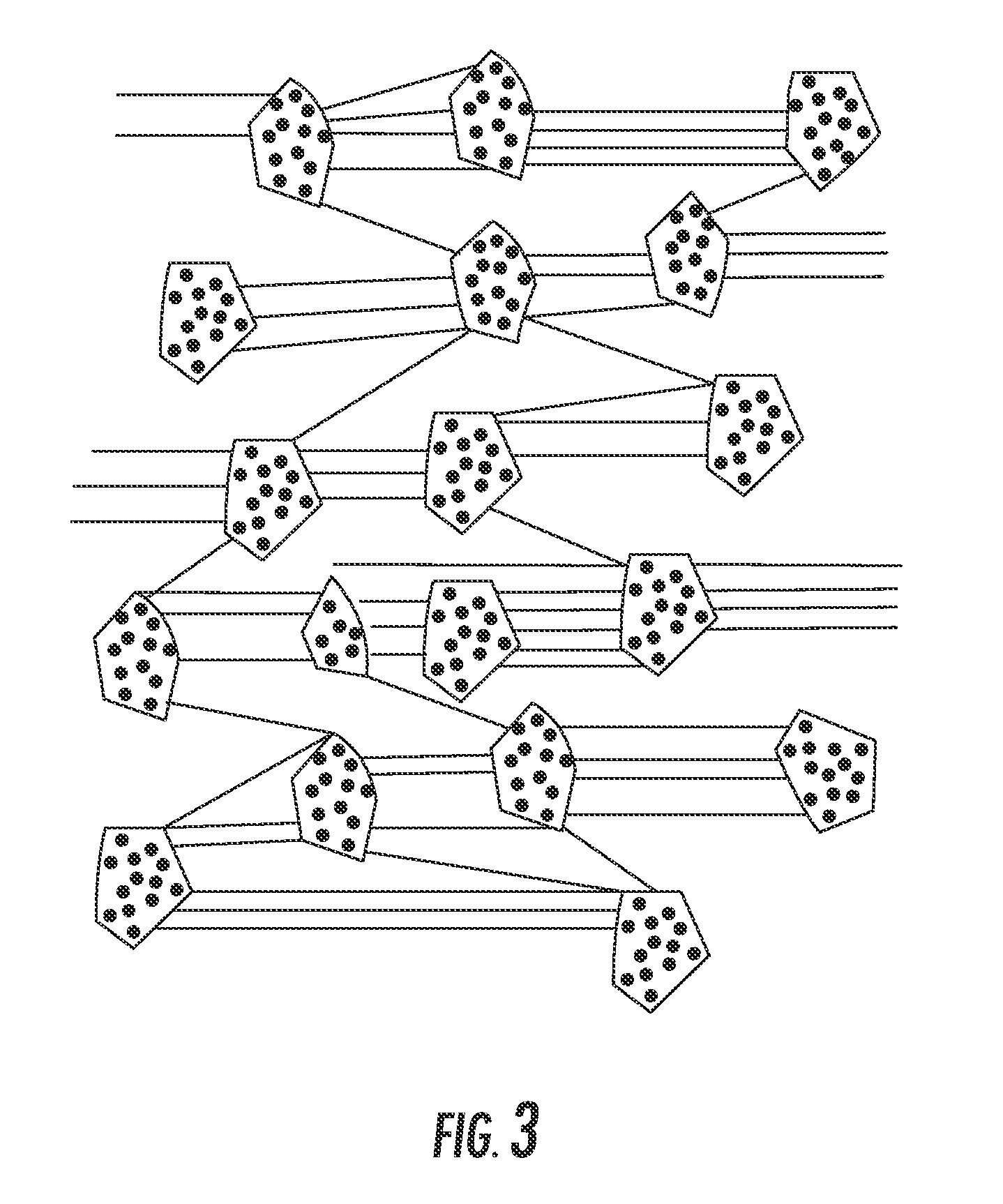Method and apparatus for rapid adsorption-desorption co2 capture
a technology of adsorption desorption and co2 capture, applied in the direction of separation process, other chemical processes, membranes, etc., can solve the problems of large equipment required for post-combustion configuration, difficult regeneration, and higher capital cos
- Summary
- Abstract
- Description
- Claims
- Application Information
AI Technical Summary
Benefits of technology
Problems solved by technology
Method used
Image
Examples
Embodiment Construction
[0024]A prior art process for embedding small sorbent granules in a polytetrafluoroethylene (PTFE) polymer matrix was developed by Gore, FIG. 3. The PTFE matrix stabilizes the sorbent while allowing for ready access to the sorbent particles. The presence of the PTFE, a hydrophobic polymer, keeps water away from the sorbent surface. This helps to prevent any sorbent pore pluggage or chemical attack. Since sorbents can be readily embedded in relatively thin sheets of a PTFE tape, any gas phase components can easily access the sorbents with minimal mass transfer resistance.
[0025]In adsorption-based separation processes, the two primary means to drive the separation are temperature and / or pressure. In the process, an adsorbent bed is subjected to changes in either or both of these to affect a separation of a mixture into its components.
[0026]In prior work, it has been shown that the key to minimizing the size of the adsorbent bed is to use devices that (1) setup flow channels that allow...
PUM
| Property | Measurement | Unit |
|---|---|---|
| temperatures | aaaaa | aaaaa |
| temperatures | aaaaa | aaaaa |
| temperatures | aaaaa | aaaaa |
Abstract
Description
Claims
Application Information
 Login to View More
Login to View More - R&D
- Intellectual Property
- Life Sciences
- Materials
- Tech Scout
- Unparalleled Data Quality
- Higher Quality Content
- 60% Fewer Hallucinations
Browse by: Latest US Patents, China's latest patents, Technical Efficacy Thesaurus, Application Domain, Technology Topic, Popular Technical Reports.
© 2025 PatSnap. All rights reserved.Legal|Privacy policy|Modern Slavery Act Transparency Statement|Sitemap|About US| Contact US: help@patsnap.com



